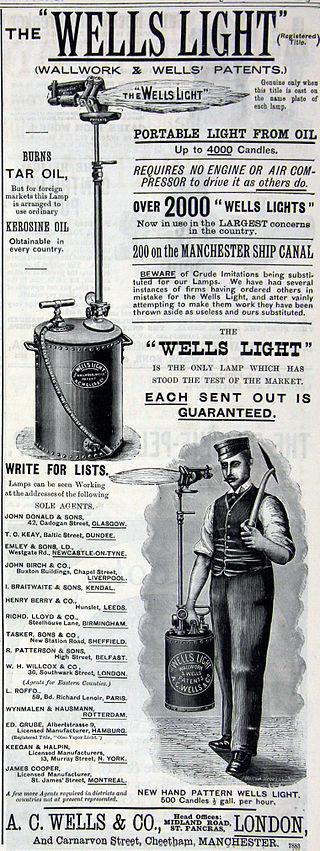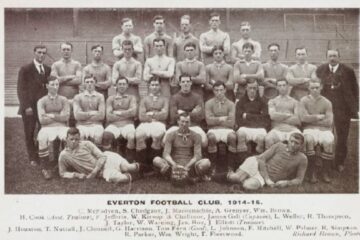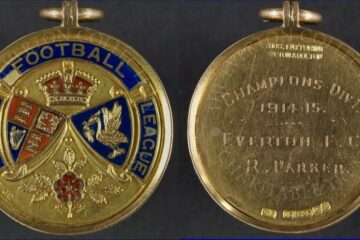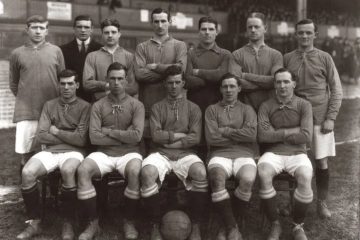
The year 1878 not only saw the foundation of the football team that would become Everton FC but, in October of that year, the first experiments in playing artificially-illuminated matches. At Sheffield United’s Bramhall Lane ground, dynamo-powered lamps were mounted on timber gantries to provide the light for a match contested by teams made up of representatives from local clubs. The ‘Blues’ ran out 2-0 winners.
But it was here on Merseyside, on 8th January 1890, that one of the most significant trials of this nascent technology occurred. On this occasion Paraffin-fuelled lamps, manufactured by A. C. Wells & Co. of Manchester, and normally used for industrial use, were deployed. The Blades were the visitors to Everton’s Anfield ground for the 7pm kick-off. By why Anfield? According to the Liverpool Courier: ‘Anfield is perhaps the best arena in the county for such experiments as the high stands serve to contain the light within the required area.’ The novelty of this innovation drew a crowd in the region of 8,000 for the exhibition fixture. The Courier reported on the 5-2 victory for the Toffees: ‘Fifteen of Wells’ patent lights were placed on the margin of the field of play at an elevation of about twenty-five feet, and these cast a brilliant radiance over the greater part of the ground – a glow that equated to 50,000 candle power…The ball was painted white in order that it might more easily be discerned. The sight of the players sprinting about the field, somewhat phantom-like, and the sea of faces round the barriers, brought into strong relief by the lights, formed a most curious and weirdly picture when the start was made at the signal given by the referee with a foghorn instead of a whistle…Considering the drawbacks in the shapes of reflections cast by players’ bodies, and the somewhat high wind that was blowing, a very nice passing game was witnessed and altogether there were but few inaccuracies.’
Aided by the wind Everton cantered into the lead through goals scored by Johnny Holt, Alf Milward and Dickie Doyle. Alec Brady and James Weir also scored before the break. United pulled back two goals in the second period. Two days, 3,000 watched a second demonstration of the Wells lamps at Anfield. The home team, described as ‘only a scratch affair’, lost 2-0 to Lancashire Nomads. In goal for Everton was Walter Sugg, brother of Frank who had played in the same position for Everton two days previously. The brothers were both accomplished cricketers and also founded the eponymous sports outfitters. It would be 68 years later that Everton’s permanent floodlights at Goodison Park came into use – in a match against the second incumbents of Anfield – Liverpool FC.
Sources:
Sheffield Football: A History, Volume 1
Liverpool Courier on Billy Smith’s bluecorrespondent.co.uk



